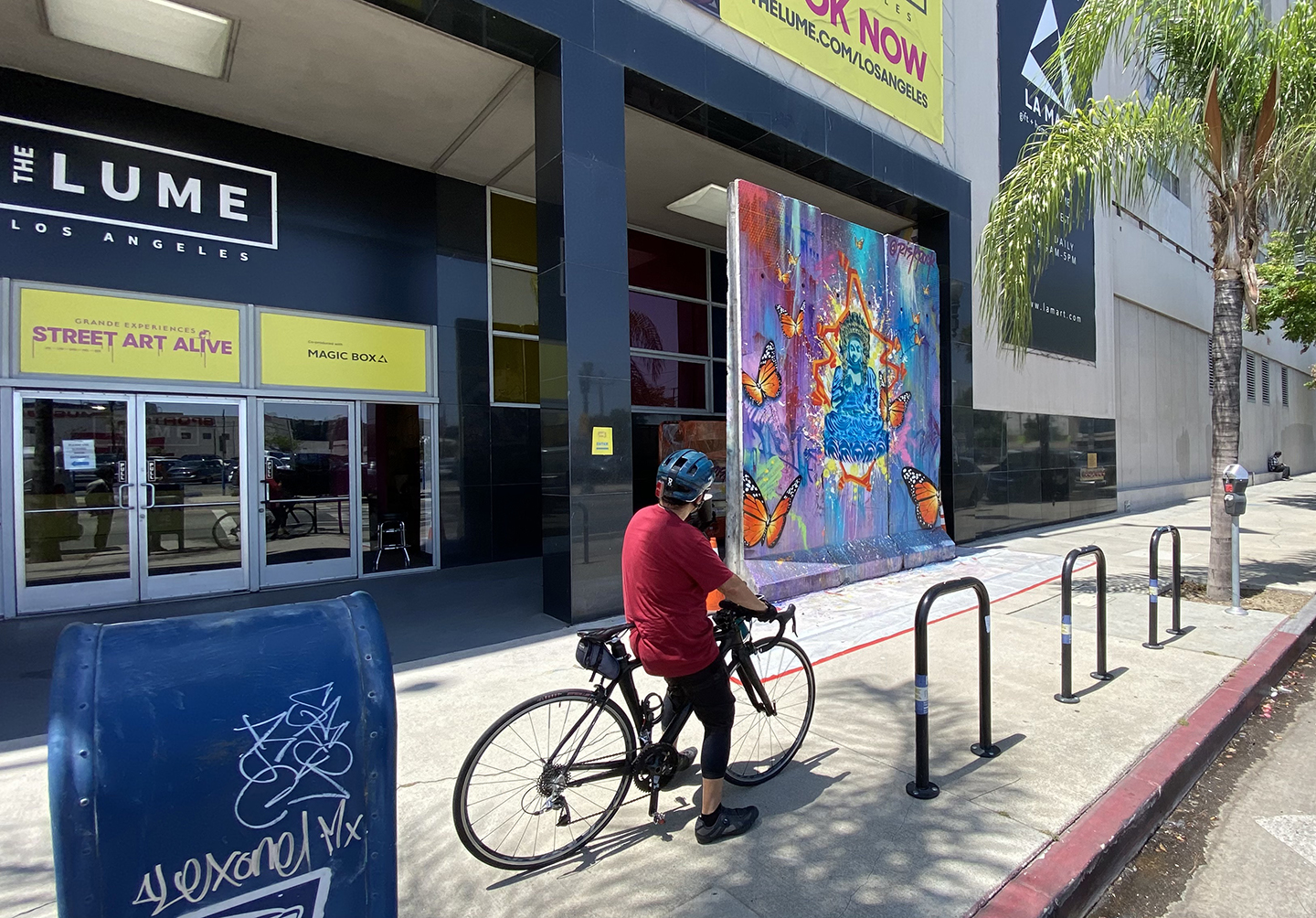STREET ART ALIVE is a 25,000 sq. ft. immersive “multi-sensory art and culture experience” that presents Street Art from Los Angeles and other major cities around the world. The interior entrance to the show features a recreation of an ‘80s New York City subway station with a heavily bombed (painted) train stopped at the platform. Although Philadelphia is often cited as the birthplace of modern graffiti, the installation neatly and attractively presents the premise that Graf and Street Art began in the train yards of NYC. The end of the faux-station segues into a simulacrum of another Graf shrine, London’s Leake Street graffiti tunnel, a 300-meter passageway that is the city’s largest legal wall. The end of this tunnel opens onto two large rooms of projections, which in turn lead to another series of rooms featuring an installation by Timbuctu State dedicated to disappeared indigenous women, a gorgeous installation of hand-painted murals by Dourone, and finally, a room with blackboard walls where one is encouraged to throw up a few tags of one’s own.

Subway station installation. Photo by Anthony Ausgang.
Most of the art featured in STREET ART ALIVE is presented as large-scale moving projections on the walls and floor of the two huge open areas. Grouped by their cities, each artist is introduced with a brief biography and mission statement. Generally, the pieces are first featured in long shots to establish their urban context, then the details within them are revealed by “pan and zoom” effects. Some of these elements are further animated, which seems unnecessary as the pieces in the show are all first rate as they are. An “audio experience” soundtrack accompanies the images and runs the gamut from late ‘70s and ‘80s distorted punk/pop, break beats, and rap poetry, to contemporary musical stylings. The combination of the visual art and the music creates a controlled chaos that drives the 45-minute film; if not for the opening and closing credits, one would be excused for thinking it was either much longer or not looped at all. This is both a benefit and a detriment. In terms of quantity, one certainly gets one’s money’s worth for the $39 admission fee, but the unrelenting onslaught of beauty without respite becomes a bit wearying and its impossible to examine a favorite piece at length.

Street view of Berlin Wall sections painted by RISK. Photo by Anthony Ausgang
![]()
![]()
In an interesting remedy to the paradox that the art in STREET ART ALIVE is presented indoors, sections of the Berlin Wall have been installed on Broadway in front of the show. Before it fell in 1989, The Berlin Wall that divided East and West Berlin had become a major location for graffiti, most of it political. Although the wall was demolished, these sections were saved, and to make them more relevant to people who were born after the concerned events, Graf artist RISK was commissioned to paint new work on the obverse side facing the street. According to the artist, “with everything going on in the world and the historic importance of the Berlin Wall, I wanted to paint something that gave people hope for a bright future.” As positive as RISK’s addition may be, it’s worth checking out the reverse sides to see graffiti painted by locals when the wall still stood in Berlin, work reflecting an authentic expression of German zeitgeist at the time. With these relics, STREET ART ALIVE not only gives a valuable history lesson, but also a similar optimism for the future.

Reverse side of Berlin Wall sections. Photo by Anthony Ausgang.
STREET ART ALIVE at THE LUME LOS ANGELES
1933 S. Broadway, Los Angeles CA 90007
Tickets and information: https://thelume.com/losangeles/


